Brand-Name Recipes
Re-create your favorite brand named foods with copycat recipes you won't find anywhere else from America's most trusted food hacker, Todd Wilbur. Search by brand name here. New recipes added every week.
-
Ferrara Butterfinger
Read moreBreak open a milk chocolate-coated Butterfinger candy bar and you’ll see flakey layers of candy inside, and it may not seem possible to duplicate that mysterious peanuty center at home without some sort of special equipment. But considering that candy bars as old as this usually start as a hand-made recipe, I figured there must be a way to craft a Butterfinger clone in your own kitchen from scratch.
Ownership of Butterfinger has changed hands a few times since Otto Schnering invented it in 1923 for his Illinois candy company, Curtiss. Standard Brands bought Curtiss in 1964, and then Nabisco merged with Standard Brands in 1981. Nestle purchased Butterfinger from Nabisco in 1990, then later sold it to Italian candy company Ferrara in 2018. Ferrara claims to have “improved” the formula in 2019 by removing preservatives, adding more cocoa to the chocolate, using better peanuts, plus a few other tweaks. And this is where the controversy starts. Posts on Butterfinger’s social media pages complain that the new Ferrara formula is not as good as the Nestle version, that it leaves a bad aftertaste, and that they should immediately bring back the old recipe.
The new label has fewer ingredients than the old label, but one omission that stood out was the removal of corn flakes. Corn flakes had been used in the Butterfinger recipe since the ‘50s, and that’s the Butterfinger most of us grew up on. Is a lack of corn flakes the reason why some Butterfinger fans don’t like the new recipe? I’m not sure if that’s all there is to it, but for this hack, I decided to go old-school and put the corn flakes back in the bar. The corn flakes need to be crushed before adding them to the candy, and you can easily do that by putting them in a small plastic bag and whacking on it with a rolling pin.
For the flakiness of the candy, we’ll use a laminating technique that creates layers in the bar, similar to laminating dough. But unlike dough where you can take your time, you’ll have to work quickly here to make as many layers as possible before it cools, which will be just a couple of minutes. Peanut butter is first spread over the candy, then it’s folded with a silicone spatula, flattened, and folded again, and again. When the candy begins to harden, it’s trimmed into bars, cooled, and dipped into milk chocolate.
Try my Butterfinger copycat recipe below, and find more of your favorite candy recipes here.
-
Kellogg's Pop-Tarts
Read moreIt took six months for Kellogg’s product developers to figure out how to mass produce a par-baked filled pastry that could be crisped up in a home toaster. In 1964, Pop-Tarts hit grocery store shelves in four flavors: strawberry, brown sugar cinnamon, blueberry, and apple currant, and went on to become Kellogg’s top-selling brand.
I set out to make a taste-alike version of the popular snack that looks just like the original and could be cooked for a second time in a toaster. It was apparent that I would need a pastry dough that was flakey yet sturdy, and with a familiar flavor reminiscent of Pop-Tarts, and eventually, I came up with a recipe that worked.
As I completed the dough for my Kellogg's Pop-Tarts copycat recipe, I worked on the filling, developing recipes for two of the most popular flavors: strawberry and brown sugar cinnamon. The strawberry filling here requires seedless strawberry jam and the cinnamon sugar filling is a simple combination of brown sugar, cinnamon, flour, and butter—like streusel. The filling is spread on the bottom layer of dough and then a top layer of dough is added, ventilated with a toothpick or wooden skewer, and baked just until light brown.
When cool, the brown sugar cinnamon tarts are frosted with cinnamon icing, and the strawberry tarts are frosted with white icing, and then topped with sprinkles. When the icing hardens your Pop-Tarts clones are ready to be finished in a toaster for eating at your convenience, just like the real ones.
Try my Kellogg's Pop Tart copycat recipe below, and find more of your favorite breakfast copycat recipes here.
-
Lofthouse Frosted Cookies
Read moreWhen Lofthouse frosted cookies were first produced from a handed-down family recipe in a makeshift bakery in the back of a Utah garage in 1994, it's likely the ingredients were different than they are in the mass-produced product found in markets across the country today. To maintain a long shelf-life, it's common for baked goods to be manufactured with nondairy substitutes, so butter is often replaced with hydrogenated oil and butter flavoring (otherwise known as margarine), and various vegetable gums and preservatives are added to improve the texture and stabilize the product.
Rather than using ingredients you find on the label of the store product, such as artificial flavoring, lecithin, cellulose gum, or carrageenan in my Lofthouse cookie recipe, we'll use real butter, fresh eggs, and vanilla extract in our clone—perhaps just as the family who created this recipe did back in the day. The big difference is that you have to be sure to eat the cookies within a few days to get that freshly baked taste and texture. Or you can freeze them so they last longer.
Cake flour is used here rather than all-purpose flour to duplicate the tender, cakey texture of the original, and sour cream is used to add in the dairy needed without over liquefying the dough (as milk would). An added benefit of sour cream is its high acidity, which activates the leavening power of the baking soda. The dough is still going to be much thinner and tackier than typical cookie dough, so chilling it for a couple of hours before portioning it out onto a baking sheet is a must to make it easier to work with.
Find more copycat recipes for your favorite famous cookies here.
-
Lotus Biscoff Cookies
Read moreJan Boone first created the traditional Belgian speculoos cookies at his Lotus Bakery in Lembeke, Belgium in 1932. Spiced shortbread cookies like these are often enjoyed with a cup of coffee, so the new cookie was called Biscoff as a mashup of “biscuit” and “coffee.” The cookies didn't become popular in the U.S. until the 1990s when airlines began passing out the cookies to travelers on every trip.
Recipe authors who claim to re-create these cookies with a blend of spices that includes clove, nutmeg, and cardamom appear to be confusing speculoos cookies from Belgium with speculaas cookies from the Netherlands. Many spices were too costly to import to Belgium at that time, so speculoos cookies were often made with just cinnamon, while the Dutch version got the more expensive blend of exotic spices.
Biscoff cookies are called “caramelized cookies” because they’re made with Belgian blonde candy sugar (bruen leger), which is granulated sugar that has been lightly caramelized. This ingredient contributes a unique taste to the cookies that is slightly different from cookies made with American brown sugar, which contains molasses. You can find brun leger online or make it yourself with white sugar in your oven using the tips here. If you'd rather not fuss with that, you can substitute with domestic light brown sugar.
Finish my Lotus Biscoff Cookies copycat recipe by slicing the rolled dough with a fluted pastry wheel to make fancy edges like the real thing, and you’ll have around 3 dozen of the classic European cookies that will fit nicely on one half-sheet pan for baking. I’m calling for all-purpose flour here, but if you want more tender, melt-in-your-mouth cookies, use fine pastry flour.
Find more of your favorite famous cookie copycat recipes here.
-
Rao's Homemade Bolognese Sauce
Read moreThe family recipes of Rao’s Italian restaurant have been enjoyed for over 125 years, but it’s only been since 1992 (starting with the marinara sauce) that the chain has been selling the ultra-popular bottled sauces under the Rao’s Homemade label, which is on track to become a billion-dollar company.
One of the many popular sauces now available from Rao’s Homemade is the Bolognese sauce, a blend of tomatoes, veggies, crumbled meatballs, and pancetta. Like my Rao’s Marinara Sauce clone recipe, this hack starts with canned San Marzano tomatoes with the famous red, white, and green San Marzano label. Those are true San Marzano tomatoes grown in the San Marzano region of Italy, and they are superior to other San Marzano-style canned tomatoes in my local grocery stores, many of which aren’t from Italy.
I would suspect that the meatballs crumbled into Rao’s Bolognese sauce are the famous Rao’s meatballs, which Rao’s sells in the restaurants and frozen food aisles, and which I hacked here. For my Rao’s Bolognese Sauce recipe, you’ll need ½ cup of crumbled meatballs using either this top secret recipe, or a bag of frozen Italian meatballs found in most stores. Obviously, my Rao’s meatball hack will give you the best ingredients for this recipe, but I found that the frozen meatballs still work great, as long as they’re good meatballs. This sauce will only be as good as the meatballs you choose.
The slow simmer marries the flavors, and after about an hour you’ll have a great Bolognese to spoon over tagliatelle, tortellini, gnocchi, or whatever you want.
-
Costco (Kirkland) Almond Poppyseed Muffins
Read moreThe real Costco muffins taste great, but they may not be as wholesome as you would like them to be. The dough has been conditioned with gums to thicken, ingredients to emulsify, and to preserve shelf-life the muffins contain no butter. Plus, the flavors you taste—including butter, almond, and vanilla—are all artificial.
I attempted to stay true to the original formula in my first take on the famous muffins with this copycat recipe for Costco’s Blueberry Muffins. In that hack, I chose to avoid butter like the real muffins do, opting instead for margarine. And since the Costco muffins contain no buttermilk, I also stayed away from that ingredient, even though I love its magical properties for baking.
This time, for my Costco Almond Poppy Muffins recipe, I’m taking a different approach to hacking the muffins with more whole egg, real butter, and, yes, buttermilk to bring great flavor and a better crumb to our finished product. Without all the dough conditioners found in the original, these home-cloned muffins are less rubbery and slightly crumblier than Costco’s, and the flavor is better, because it’s real.
Find more favorite famous bread recipes here.
-
See's Candies Chocolate Walnut Fudge
Read moreFudge can be finicky. It's created by combining hot candy syrup with chocolate, which can result in a grainy mess if the chocolate seizes and gets clumpy. This undesirable situation can be avoided by closely monitoring the temperature, but even then your chocolate could still lock up, and your fudge will be ruined. I couldn't let that happen in my recipe re-creation of the famous fudge from the 100-year-old West Coast candy chain.
For my See's Chocolate Walnut Fudge copycat recipe, I made over 56 pounds of fudge on my quest to develop a recipe that works every time, even if the chocolate seizes. And in most of my batches, it usually did. So I came up with a secret trick: reserve a little cream for later, then after the hot candy syrup is mixed with the chocolate and the chocolate begins to seize, send the cream to the rescue and the fudge will become smooth, as if by magic.
Stir in some walnuts, then pour the fudge into a wax paper-lined pan, and when it cools, you'll have over 3 1/2 pounds of thick fudge that tastes just like the real thing. That's more than $110 worth of fudge if you bought it at the candy store!
Fans of the cinnamon lollipop will love my See's Cinnamon Lollypop recipe here.
-
Harry Potter Butterbeer
Read moreThe imaginary drink from J.K. Rowling's books became a reality when the first Wizarding World of Harry Potter appeared in 2010. Since then, many hacks for the beverage have emerged online. The only problem is, if Rowling's reported requirements for the drink are true, then almost all of those copycats recipes got something very wrong.
Learn more and get my recipe for free on my Food Hacker Blog here.
-
Nestle Drumstick
Read moreNot only is it possible to make a clone of Nestle's world-famous Drumstick in your home kitchen, it's also a heck of a lot of fun.
Get this recipe for free on my Food Hacker Blog here.
-
Haribo-Gold Gummy Bears Candy
Read moreThe nearly 100-year-old candy recipe can be easily replicated with Jell-O and a few other ingredients. But it's a little bit of food science that makes this gummy candy hack different from any other.
Learn more and get my recipe for free on my Food Hacker Blog here.
-
Smucker's Chocolate Fudge Magic Shell
Read moreIt comes out of the bottle as a liquid, but within seconds of landing on a scoop of ice cream, this magical sauce becomes a solid shell of chocolate.
Learn more and get my recipe for free on my Food Hacker Blog here.
-
Nothing Bundt Cakes White Chocolate Raspberry Cake
Read moreWhile sharing a Bundt cake one day in 1997, amateur bakers and close friends Dena Tripp and Debbie Shwetz realized they could do better. After much experimentation, the duo discovered a batter that produced a moist, delicious cake, which was a huge improvement over the dense, dry cake usually associated with Bundts. But they weren’t done yet.
The next step was to decide how to best frost their new Bundt cake. Traditionally, Bundt cakes are glazed by drizzling warm icing over the top, which drips down the sides and dries there. But the pair didn’t want to use glaze. They had a cream cheese icing they thought tasted better than any glaze, but it took some time to figure out how to apply it. They eventually settled on frosting their Bundts with large piped vertical ropes, so the icing looks like it’s dripping down the outside of the cake.
To make a Bundt cake that matches the moistness and crumb of the real Nothing Bundt Cake, it’s important to start with the right flour. The cake has more bite to it than one made with only cake flour, but it isn’t as tough as one made with all-purpose flour. That’s why I settled on pastry flour, like the one from Bob’s Red Mill. Pastry flour contains more protein than cake flour, but not as much as all-purpose flour, so it works perfectly here. If you can’t find pastry flour, no need to worry. I’ve got a way for you to hack it by combining cake flour with all-purpose flour in a 2-to-1 ratio.
The raspberry puree is made from scratch using frozen raspberries and it’s swirled into the batter before the cake goes into the oven. While the cake cools you can make the cream cheese buttercream icing. Get a 1A tip, which is a wide, circular tip for a pastry bag or gun, to make ropes of icing over the top and down the sides of the cake all the way around, just like the original.
Get this recipe in my book "Top Secret Recipes Unleashed" only on Amazon here.
-
Charms Blow Pop
Read moreThe fruity lollipop with gum inside is Charms' bestselling product, but the cool combo candy was the brainchild of a different candy company. Thomas T. Tidwell of Triple T Co. invented and patented his method for encasing gum inside candy in the 1960s, and sold his new lollipop, Triple Treat, for a short time. In 1973, Tidwell sold the product idea to the Charms Candy Company who renamed it Blow Pop, and for over 50 years the famous pop has been enjoyed by millions of happy mouths.
I’m not privy to the details of Tidwell’s method, but I can see by the vertical seam on a real Blow Pop that it's probably made by sealing two halves of the pop together, one half with gum and one half without. I tried various silicone lollipop molds for my Charms Blow Pop copycat recipe with little success and decided instead to create a technique using half of a slightly altered cake pop mold. I first poured half of the pop into the molds, added the gum on a stick, and when it hardened I removed it, poured the other half of the candy into the mold, and added the hardened first half on top. When all was set, I had perfectly spherical pops with seams just like the original. And it didn’t seem to bother anyone that my pops were more than twice as big as the real thing.
I designed my recipe to call for 1 dram of LorAnn Oils which you can find online. The original Blow Pops come in five flavors, and I’ve got four of them for you here: cherry, grape, watermelon, and sour apple. I also made a batch of cinnamon pops just for fun and added those instructions to the Tidbits below. Real Blow Pops don’t come in cinnamon flavor, but after tasting these, you might wish they did.
-
Fudgsicle Original Fudge Bars
Read moreRe-creating this popular frozen ice pop is more than just mixing sugar and cocoa into skim milk and freezing it with a stick in the middle. In addition to the great chocolate taste, a Fudgsicle copycat recipe wouldn't be right if it didn't have the same creamy–and not at all icy–texture of the original.
So how do we hack that? We'll use a little gelatin in the mix plus some fat-free half-and-half, which contains carrageenan a natural thickener found in the real fudge bars that improves the texture and helps prevent the formation of ice crystals.
For my Fudgsicle Fudge Bars copcyat recipe, simply combine the ingredients below in a saucepan over medium heat until the sugar is dissolved, then pour the creamy mixture into an ice pop mold. When the pops are semisolid, add the sticks. A few hours later, you'll have seven or eight perfect fudge pops with the same great taste and mouthfeel as the famous original product.
Find more of my cool snack copycat recipes here.
Source: "Top Secret Recipes Step-by-Step" by Todd Wilbur. -
Sara Lee Original Cream Cheesecake
Read moreIn 1949 a bakery owner named Charles Lubin pioneered the frozen-foods business when he invented a top-quality cream-cheese cake for sale in supermarkets and restaurants. He named the cheesecake after his daughter, Sara Lee. Though skeptics believed that a frozen baked item could not be sold in large grocery stores, Lubin's cheesecake was such a success that only two years later, in 1951, he opened the Kitchens of Sara Lee and began to add other items to his line. In the early 1950s Lubin introduced the aluminum foil pan, which allowed his products to be baked, quickly frozen, and sold in the same container. Today, the Kitchens of Sara Lee produce more than 200 varieties of baked goods. And few people know that this diverse company has also been successful in manufacturing and marketing coffee, meats, and even pantyhose under the Hanes and Liz Claiborne labels.
Use my Sara Lee Cheesecake copycat recipe below to duplicate this famous cheesecake at home, and try more of my famous and fun dessert recipes here.
Source: Top Secret Recipes by Todd Wilbur.
-
Mrs. Fields Chocolate Chip Cookies (TV)
Read moreI jumped at the chance to get another crack at hacking one of America's most famous chocolate chip cookies when I was faced with the challenge for my show, Top Secret Recipe. After all, this was the very first recipe I copied over twenty-five years ago, and I've learned many new tricks for replicating the famous foodstuffs since then. Getting the chance to improve on my old secret recipes with new information was a golden opportunity to craft the best Mrs. Fields Chocolate Chip Cookie recipe ever revealed. So I hopped on a plane and headed to Salt Lake City to meet with Tim Casey, president and CEO of Mrs. Fields Cookies.
Tim showed me around the flavoring labs and test kitchens of Mrs. Fields HQ. I watched cookie dough being mixed, noting the oven temperature and length of time the cookies were baked. I was also able to discover one important trick I missed in my first recipe: after the dough was portioned out onto baking sheets, it was frozen. This way, when the cookies were baked, they came out crispy on the edges and soft and gooey in the middle. It made a huge difference!
The company was understandably vague on the specifics of the proprietary vanilla and chocolate chips they use in the cookies, but I discovered through taste tests that Madagascar vanilla extract and high-quality chocolate chips such as those made by Guittard (or even Ghirardelli) are the way to go.
Mission accomplished! What follows is my much-improved re-hack of the classic recipe that started it all, and perhaps one of the best chocolate chip cookies to ever come out of your oven.
Source: Top Secret Recipes Step-by-Step by Todd Wilbur.
-
See's Candies Butterscotch Lollypop
Read moreThe first See's Candy shop was opened in Los Angeles in 1921 by Charles A. See. He used his mother's candy recipes, and a picture of her at the age of seventy-one embellished every black-and-white box of chocolates. Mary See died in 1939 at the age of eighty-five, but her picture went on to become a symbol of quality and continuity. See's manufacturing plants are still located in California, but because the company will ship anywhere in the United States, See's has become a known and respected old-fashioned-style chocolatier all across the country.
In an age of automation, many companies that manufacture chocolate have resorted to automated enrobing machines to coat their chocolates. But See's workers still hand-dip much of their candy.
One of the company's most popular sweets isn't dipped at all. It's a hard, rectangular lollipop that comes in chocolate, peanut butter and butterscotch flavors. The latter, which tastes like caramel, is the most popular flavor of the three, and my See's Candies butterscotch lollipop recipe will enable you to clone the original, invented more than fifty years ago. You will need twelve shot glasses, espresso cups, or sake cups for molds, twelve lollipop sticks or popsicle sticks.Fans of the cinnamon lollipop will love my See's Cinnamon Lollypop recipe here.
Source: Top Secret Recipes by Todd Wilbur.
-
A & W Root Beer
Read moreIn 1919, when Roy Allen and Frank Wright started selling their new root beer beverage to a thirsty America, national Prohibition was taking its grip on the country. Their timing couldn't have been better. No longer able to legally drink real beer, thirsty patriots had to settle for this sweet, foamy concoction derived from roots, herbs, and berries. Roy and Frank had thirteen years of Prohibition to make their mark and their fortune from this refreshing drink. By 1933, when Prohibition came to a screeching halt, Roy and Frank had 171 stands in various shapes and sizes, each with the familiar A&W logo on them, all across the country. These drive-up stands with their tray boys and tray girls bringing cold drinks out to the cars were an inspiration for many other roadside stands and diners, and the prelude to the popular fast food drive-thrus of today. You can still get a foamy mug of A&W root beer at outlets across the country, or just enjoy some from a 12-ounce can.
But if it's some home cloning you'd like to get into, check out my improved A&W root beer recipe that was first printed in More Top Secret Recipes. The beauty is you won't have to worry about collecting roots, herbs, and berries like the pros do when making A&W root beer. Instead ,you just need to get some root beer extract, manufactured by McCormick, that you'll find near the vanilla in your local supermarket. Make up some root beer syrup, let it cool off in the fridge, and you can whip up 10 servings of A & W root beer by combining the syrup with soda water whenever you're ready to drink it.Source: Top Secret Recipes: Sodas, Smoothies, Spirits and Shakes by Todd Wilbur.
-
A & W Cream Soda
Read moreSure, Roy Allen and Frank Wright are better known for the exquisite root beer concoction sold first from California drive-up stands under the A & amp;W brand name. But these days the company makes a darn good vanilla cream soda as well. And the formula is one we can easily clone at home by combining a few simple ingredients. Most of the flavor comes from vanilla, but you'll also need a little lemonade flavor Kool-Aid unsweetened drink mix powder. This mix comes in .23-ounce packets and provides the essential citric acid that gives my A&W cream soda recipe the slight sour flavor of the real thing. Once you make the syrup, let it cool down in the fridge, then combine the syrup with cold soda water in a 1-to-4 ration, add a little ice, and get sipping.
You might also want to try my A & W root beer recipe here.
Source: Top Secret Recipes: Sodas, Smoothies, Spirits and Shakes by Todd Wilbur.
-
7-UP
Read moreUse my 7-Up recipe below to make a home clone of this refreshing citrus beverage in no time at all. Just add lemon and lime juice to a syrup solution, along with a little Kool-Aid lemonade drink mix for that special tang thanks to included citric acid, and you're almost there. When the syrup has cooled, mix it into some cold soda water in a 1 to 4 ratio. That's it. You've just made this clone of 7-UP yours.
Find more famous drink recipes here.
Source: Top Secret Recipes: Sodas, Smoothies, Spirits and Shakes by Todd Wilbur.
-
Mr and Mrs T Rich and Spicy Bloody Mary Mix
Read moreCopy the famous and very popular Bloody Mary Mix from that couple with only a letter as a last name. It's a simple-to-make blend of tomato juice and spices with some prepared horseradish and canned jalapeño juice thrown in for a "spicier, zestier" drink.
Make my Mr and Mrs T Rich and Spicy Bloody Mary Mix copycat recipe and serve with vodka over ice, for a delicious cocktail, or sip it straight.
Click here to see if I copied more of your favorite drinks.
Source: Top Secret Recipes: Sodas, Smoothies, Spirits & Shakes by Todd Wilbur.
-
Mrs. Fields Chocolate Chip Cookies 1993
Read moreHere's the first Mrs. Fields chocolate chip cookie copycat recipe I created for the first Top Secret Recipes book back in 1987. Inspired by a bogus chain-letter cookie recipe, this is my version of the delicious Mrs. Fields cookies that are crispy around the edge and chewy in the middle. Be careful not to cook these too long. I know it becomes tempting to keep cooking these—they don't seem to be done after 10 minutes—but they will continue to cook for awhile after you take them out of the oven, and when cool, will be chewy in the middle.
You might also want to try my improved Mrs. Fields cookie recipe that I created with the secrets I learned at Mrs. Fields HQ.
Source: Top Secret Recipes by Todd Wilbur.
-
Cliff and Buster Coconut Macaroons
Read moreWhile passing these out to each giddy audience member on her 2003 "Favorite Things" show, Oprah gushed, "Isn't that the best macaroon you've ever had?" The recipe for these delicious yet easy-to-clone coconut macaroons was passed down to Cliff Barsevich years ago from his grandmother, and they were served at the events serviced by Cliff and partner Ron Strles' catering business. When customers continued to rave about the cookies, the duo began selling the macaroons by the box in high-end stores such as Neiman Marcus. With a lot of help from The Oprah Winfrey Show, the cookies have become a huge success.
Still, at 15 bucks a dozen, it's nice to have a clone that will satisfy your macaroon munchies at a fraction of the cost. My Cliff and Buster Coconut Macaroon copycat recipe is the closest we'll ever get to a homemade version, since Cliff says he's never sharing the recipe. He says he's taking the secret formula with him when he dies.
Try more of my copycat recipes for your favorite famous cookies and brownies here.
Source: Top Secret Recipes Unlocked by Todd Wilbur. -
Cadbury Creme Egg
Read moreEach spring Cadbury candy machines whip out 66,000 of these cool candies every hour. And now, because of the success of these chocolates with the orange, yolk-colored center, other candy companies have come out with their own milk chocolate eggs. Some are filled with Snickers or Milky Way centers, while others contain peanut butter, coconut, caramel, or the same type of fondant center as the original—right down to the colors.
Still, nothing compares to these original eggs that are sold only once a year, for the Easter holiday. And now you can enjoy your own version at home anytime you like. With my Cadbury crème egg recipe below, the final shape of your candy will be more like half eggs, but the flavor will be full-on Cadbury.
Want to copy more of your favorite candy at home? See if I hacked your favorites here.
Source: Even More Top Secret Recipes by Todd Wilbur.
Update 4/11/17: I recently discovered that freezing the very sticky fondant center—rather than refrigerating it—makes it easier to work with. I made the adjustments in the recipe below.
YOU MAY ALSO LIKE
-
Charms Blow Pop
Read moreThe fruity lollipop with gum inside is Charms' bestselling product, but the cool combo candy was the brainchild of a different candy company. Thomas T. Tidwell of Triple T Co. invented and patented his method for encasing gum inside candy in the 1960s, and sold his new lollipop, Triple Treat, for a short time. In 1973, Tidwell sold the product idea to the Charms Candy Company who renamed it Blow Pop, and for over 50 years the famous pop has been enjoyed by millions of happy mouths.
I’m not privy to the details of Tidwell’s method, but I can see by the vertical seam on a real Blow Pop that it's probably made by sealing two halves of the pop together, one half with gum and one half without. I tried various silicone lollipop molds for my Charms Blow Pop copycat recipe with little success and decided instead to create a technique using half of a slightly altered cake pop mold. I first poured half of the pop into the molds, added the gum on a stick, and when it hardened I removed it, poured the other half of the candy into the mold, and added the hardened first half on top. When all was set, I had perfectly spherical pops with seams just like the original. And it didn’t seem to bother anyone that my pops were more than twice as big as the real thing.
I designed my recipe to call for 1 dram of LorAnn Oils which you can find online. The original Blow Pops come in five flavors, and I’ve got four of them for you here: cherry, grape, watermelon, and sour apple. I also made a batch of cinnamon pops just for fun and added those instructions to the Tidbits below. Real Blow Pops don’t come in cinnamon flavor, but after tasting these, you might wish they did.
-
Nothing Bundt Cakes White Chocolate Raspberry Cake
Read moreWhile sharing a Bundt cake one day in 1997, amateur bakers and close friends Dena Tripp and Debbie Shwetz realized they could do better. After much experimentation, the duo discovered a batter that produced a moist, delicious cake, which was a huge improvement over the dense, dry cake usually associated with Bundts. But they weren’t done yet.
The next step was to decide how to best frost their new Bundt cake. Traditionally, Bundt cakes are glazed by drizzling warm icing over the top, which drips down the sides and dries there. But the pair didn’t want to use glaze. They had a cream cheese icing they thought tasted better than any glaze, but it took some time to figure out how to apply it. They eventually settled on frosting their Bundts with large piped vertical ropes, so the icing looks like it’s dripping down the outside of the cake.
To make a Bundt cake that matches the moistness and crumb of the real Nothing Bundt Cake, it’s important to start with the right flour. The cake has more bite to it than one made with only cake flour, but it isn’t as tough as one made with all-purpose flour. That’s why I settled on pastry flour, like the one from Bob’s Red Mill. Pastry flour contains more protein than cake flour, but not as much as all-purpose flour, so it works perfectly here. If you can’t find pastry flour, no need to worry. I’ve got a way for you to hack it by combining cake flour with all-purpose flour in a 2-to-1 ratio.
The raspberry puree is made from scratch using frozen raspberries and it’s swirled into the batter before the cake goes into the oven. While the cake cools you can make the cream cheese buttercream icing. Get a 1A tip, which is a wide, circular tip for a pastry bag or gun, to make ropes of icing over the top and down the sides of the cake all the way around, just like the original.
Get this recipe in my book "Top Secret Recipes Unleashed" only on Amazon here.
-
Nabisco Fig Newtons
Read moreIn 1891, a baker named Charles Rosen invented a machine that inserted fig paste into seamless pastry dough and was soon mass-producing one of the first commercially baked products in America. Rosen named his creation after the nearby town of Newton, Massachusetts, and eventually sold the recipe to the Kennedy Biscuit Company, which later became Nabisco. Today Nabisco sells over 1 billion Fig Newtons each year.
It has long been my wish to create a satisfying clone of such an iconic snack, but I was never quite sure how to go about it. The fig filling needs to be sweet with a sour aftertaste, and thick like jam. The thin pastry would need to be tender, not tough, and should smoothly wrap around the figs without cracking. After a week or so of pureeing dry figs and testing pastry doughs, I finally created a Fig Newton recipe that tasted great and looked just like the original.
Since you likely don’t have a fig bar extruder in your kitchen like Charles Rosen did, we’ll use a dough folding technique to make nicely shaped bars with smooth sides, no cracks, and no visible seam. The trick is to roll out the dough on wax paper, then wrap the dough around the fig filling by lifting the wax paper up and over the filling. You can cleanly manipulate very thin dough this way, and when you flip the bar over, the seam will be hidden.
Re-hydrating the dried figs will help make them easier to puree, and the dry pectin in the mix will thicken the figs to a jammy consistency and give the filling additional tartness (citric acid is in pectin to help activate it). My Fig Newton recipe will make 48 cookies, or more than twice what you get in two 10-ounce packages of the real thing.
Get the recipe in my book "Top Secret Recipes Unleashed" only on Amazon here.
-
Smucker's Chocolate Fudge Magic Shell
Read moreIt comes out of the bottle as a liquid, but within seconds of landing on a scoop of ice cream, this magical sauce becomes a solid shell of chocolate.
Learn more and get my recipe for free on my Food Hacker Blog here.
-
Haribo-Gold Gummy Bears Candy
Read moreThe nearly 100-year-old candy recipe can be easily replicated with Jell-O and a few other ingredients. But it's a little bit of food science that makes this gummy candy hack different from any other.
Learn more and get my recipe for free on my Food Hacker Blog here.
-
Nestle Drumstick
Read moreNot only is it possible to make a clone of Nestle's world-famous Drumstick in your home kitchen, it's also a heck of a lot of fun.
Get this recipe for free on my Food Hacker Blog here.
-
Harry Potter Butterbeer
Read moreThe imaginary drink from J.K. Rowling's books became a reality when the first Wizarding World of Harry Potter appeared in 2010. Since then, many hacks for the beverage have emerged online. The only problem is, if Rowling's reported requirements for the drink are true, then almost all of those copycats recipes got something very wrong.
Learn more and get my recipe for free on my Food Hacker Blog here.
-
See's Candies Chocolate Walnut Fudge
Read moreFudge can be finicky. It's created by combining hot candy syrup with chocolate, which can result in a grainy mess if the chocolate seizes and gets clumpy. This undesirable situation can be avoided by closely monitoring the temperature, but even then your chocolate could still lock up, and your fudge will be ruined. I couldn't let that happen in my recipe re-creation of the famous fudge from the 100-year-old West Coast candy chain.
For my See's Chocolate Walnut Fudge copycat recipe, I made over 56 pounds of fudge on my quest to develop a recipe that works every time, even if the chocolate seizes. And in most of my batches, it usually did. So I came up with a secret trick: reserve a little cream for later, then after the hot candy syrup is mixed with the chocolate and the chocolate begins to seize, send the cream to the rescue and the fudge will become smooth, as if by magic.
Stir in some walnuts, then pour the fudge into a wax paper-lined pan, and when it cools, you'll have over 3 1/2 pounds of thick fudge that tastes just like the real thing. That's more than $110 worth of fudge if you bought it at the candy store!
Fans of the cinnamon lollipop will love my See's Cinnamon Lollypop recipe here.
-
Southern Comfort Traditional Egg Nog
Read moreOnline taste tests and reviews routinely mention Farmland Fresh, Darigold, and Southern Comfort as America's best egg nog brands. And of the three, Southern Comfort, a brand famously known for fruit-flavored whiskey, often takes the top spot with its delicious “traditional” egg nog. Which, ironically, contains no booze.
But the first egg nog, invented in medieval Britain, was quite intoxicating. It was a warm drink made with milk and sherry, and thickened with plenty of egg yolks. That’s a much different beverage experience than today’s branded egg nog, often served cold. And the cartons of egg nog from your market are now made with non-traditional ingredients such as corn syrup, and much of the egg yolk has been replaced with cheaper and longer-lasting natural gums, like carrageenan and guar gum.
But, for my Southern Comfort Traditional Egg Nog copycat recipe, we'll turn back the clock and make egg nog more traditionally, with plenty of real egg yolks to thicken the batch, and no gums or corn syrup. My easy recipe will give you around 36 ounces of fresh homemade egg nog. And it’s up to you to add any booze.
Make more fun, famous drinks with my recipes here.
-
Pepperidge Farm Pumpkin Cheesecake Soft Baked Cookies
Read moreYou might expect to find some sort of cheese in a product with “cheesecake” in the name, but that isn’t the case in this seasonal release from the famous bakery brand owned by Campbell’s Soup. There is real pumpkin in these chewy cookies that will appeal to lovers of the whole pumpkin spice thing, but the tiny drops in the cookies that I thought would taste like cheesecake, are just white chocolate chips. It’s up to us to imagine that white chocolate tastes like cheesecake, which it really doesn’t, but whatever. They’re still great cookies.
My Pepperidge Farm Pumpkin Cheesecake Soft Baked Cookies copycat recipe is a cinch and will produce around 32 cookies that look and taste like the originals, right down to the color which is re-created with red and yellow food coloring in a 1-to-3 ratio. The pumpkin adds some orange color to the cookies, but to re-create the bright orange of the real thing, the added colors are essential.
This hack re-creates the cookies with plain white chocolate chips just like the real thing, but if you want real cheesecake-flavored chips, I’ve got a quick recipe below in the Tidbits that combines cream cheese and melted white chocolate chips to make little cheesecake chunks. Mix these into your cookie dough and in a matter of minutes you’ll be serving pumpkin cheesecake cookies that truly live up to their name.
Find more of your favorite Pepperidge Farm cookie recipes here.
-
Costco (Kirkland) Almond Poppyseed Muffins
Read moreThe real Costco muffins taste great, but they may not be as wholesome as you would like them to be. The dough has been conditioned with gums to thicken, ingredients to emulsify, and to preserve shelf-life the muffins contain no butter. Plus, the flavors you taste—including butter, almond, and vanilla—are all artificial.
I attempted to stay true to the original formula in my first take on the famous muffins with this copycat recipe for Costco’s Blueberry Muffins. In that hack, I chose to avoid butter like the real muffins do, opting instead for margarine. And since the Costco muffins contain no buttermilk, I also stayed away from that ingredient, even though I love its magical properties for baking.
This time, for my Costco Almond Poppy Muffins recipe, I’m taking a different approach to hacking the muffins with more whole egg, real butter, and, yes, buttermilk to bring great flavor and a better crumb to our finished product. Without all the dough conditioners found in the original, these home-cloned muffins are less rubbery and slightly crumblier than Costco’s, and the flavor is better, because it’s real.
Find more favorite famous bread recipes here.
-
Lofthouse Frosted Cookies
Read moreWhen Lofthouse frosted cookies were first produced from a handed-down family recipe in a makeshift bakery in the back of a Utah garage in 1994, it's likely the ingredients were different than they are in the mass-produced product found in markets across the country today. To maintain a long shelf-life, it's common for baked goods to be manufactured with nondairy substitutes, so butter is often replaced with hydrogenated oil and butter flavoring (otherwise known as margarine), and various vegetable gums and preservatives are added to improve the texture and stabilize the product.
Rather than using ingredients you find on the label of the store product, such as artificial flavoring, lecithin, cellulose gum, or carrageenan in my Lofthouse cookie recipe, we'll use real butter, fresh eggs, and vanilla extract in our clone—perhaps just as the family who created this recipe did back in the day. The big difference is that you have to be sure to eat the cookies within a few days to get that freshly baked taste and texture. Or you can freeze them so they last longer.
Cake flour is used here rather than all-purpose flour to duplicate the tender, cakey texture of the original, and sour cream is used to add in the dairy needed without over liquefying the dough (as milk would). An added benefit of sour cream is its high acidity, which activates the leavening power of the baking soda. The dough is still going to be much thinner and tackier than typical cookie dough, so chilling it for a couple of hours before portioning it out onto a baking sheet is a must to make it easier to work with.
Find more copycat recipes for your favorite famous cookies here.
-
Fudgsicle Original Fudge Bars
Read moreRe-creating this popular frozen ice pop is more than just mixing sugar and cocoa into skim milk and freezing it with a stick in the middle. In addition to the great chocolate taste, a Fudgsicle copycat recipe wouldn't be right if it didn't have the same creamy–and not at all icy–texture of the original.
So how do we hack that? We'll use a little gelatin in the mix plus some fat-free half-and-half, which contains carrageenan a natural thickener found in the real fudge bars that improves the texture and helps prevent the formation of ice crystals.
For my Fudgsicle Fudge Bars copcyat recipe, simply combine the ingredients below in a saucepan over medium heat until the sugar is dissolved, then pour the creamy mixture into an ice pop mold. When the pops are semisolid, add the sticks. A few hours later, you'll have seven or eight perfect fudge pops with the same great taste and mouthfeel as the famous original product.
Find more of my cool snack copycat recipes here.
Source: "Top Secret Recipes Step-by-Step" by Todd Wilbur. -
Rao's Homemade Bolognese Sauce
Read moreThe family recipes of Rao’s Italian restaurant have been enjoyed for over 125 years, but it’s only been since 1992 (starting with the marinara sauce) that the chain has been selling the ultra-popular bottled sauces under the Rao’s Homemade label, which is on track to become a billion-dollar company.
One of the many popular sauces now available from Rao’s Homemade is the Bolognese sauce, a blend of tomatoes, veggies, crumbled meatballs, and pancetta. Like my Rao’s Marinara Sauce clone recipe, this hack starts with canned San Marzano tomatoes with the famous red, white, and green San Marzano label. Those are true San Marzano tomatoes grown in the San Marzano region of Italy, and they are superior to other San Marzano-style canned tomatoes in my local grocery stores, many of which aren’t from Italy.
I would suspect that the meatballs crumbled into Rao’s Bolognese sauce are the famous Rao’s meatballs, which Rao’s sells in the restaurants and frozen food aisles, and which I hacked here. For my Rao’s Bolognese Sauce recipe, you’ll need ½ cup of crumbled meatballs using either this top secret recipe, or a bag of frozen Italian meatballs found in most stores. Obviously, my Rao’s meatball hack will give you the best ingredients for this recipe, but I found that the frozen meatballs still work great, as long as they’re good meatballs. This sauce will only be as good as the meatballs you choose.
The slow simmer marries the flavors, and after about an hour you’ll have a great Bolognese to spoon over tagliatelle, tortellini, gnocchi, or whatever you want.
-
Totino's Pizza Rolls
Read moreLuigino “Jeno” Paulucci had been manufacturing prepared Chinese food products for a couple of decades when he realized that eggrolls could be filled with pretty much anything. Jeno tested dozens of fillings, but it was the eggrolls filled with pizza toppings that got the most raves, so that became Jeno’s new product. The pizza rolls were so successful that Jeno sold his Chinese food company and dedicated himself to producing the world’s best frozen pizza and original pizza rolls. His vision paid off. 20 years later, in 1985, Jeno scored a $135 million payday when he sold his company to Pillsbury, the manufacturer of Totino’s—a competing pizza rolls brand that copied Jeno’s invention. Pillsbury combined the two brands in the early 1990s, and today all pizza rolls are produced under the Totino’s name. Jeno’s brand has been officially retired to the dead food bin.
As I studied the ingredients for Totino’s Pizza Rolls I was surprised to discover that they do not contain real cheese. I’m not sure why this is, but for my clone, I’m using all real ingredients. It’s likely the original pizza rolls recipe was changed at some point for cost reasons, and if that’s the case, then my Totino’s Pizza Rolls copycat recipe should be closer to the original from Jeno that was made with real cheese.
For the dough, I first tried using pre-made eggroll wrappers, but they didn’t bake well and were not a good match to Totino’s dough, so I was left with no choice but to make a simple dough from scratch. Totino’s print ads from the 1960s and 1970s referred to an “egg-crust”, so I designed a simple dough based on an eggroll wrapper recipe made with egg. You’ll need an easy way to roll a very thin dough wrapper for this recipe, and the best way to do that is with a pasta machine. You can certainly roll the dough very thin by hand, but a pasta machine is a big help here.
Once your dough is rolled thin, you’ll fill it and fold it in the special way described below to create the same “pillow” shape as the original. After a quick par-fry, the rolls are frozen and can be baked anytime you feel a pizza roll craving coming on, just like the famous original Jeno’s—sorry—Totino’s Pizza Rolls.
Find more fun snack recipes here.

For over 30 years I've been deconstructing America's most iconic brand-name foods to make the best original copycat recipes for you to use at home. Welcome to my lab.


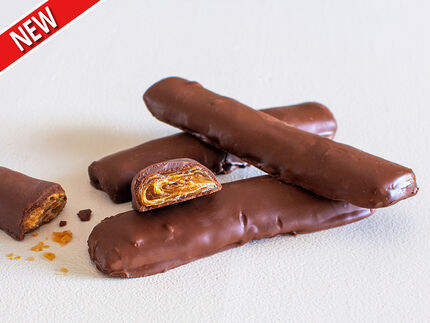
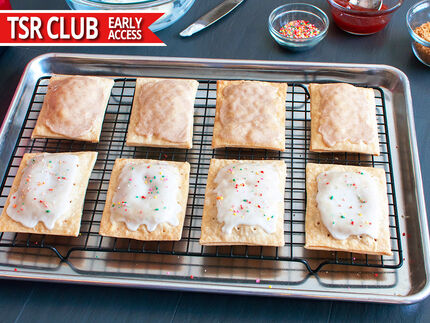

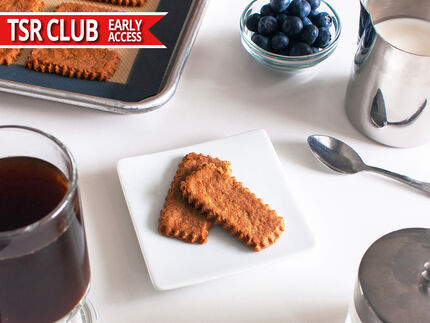
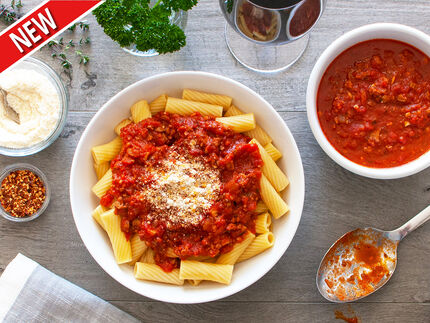
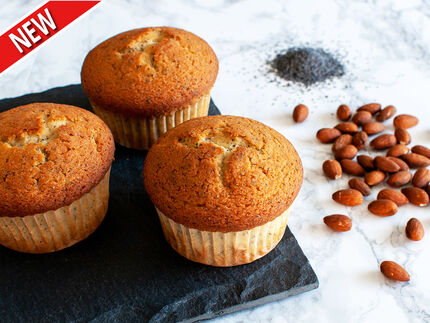
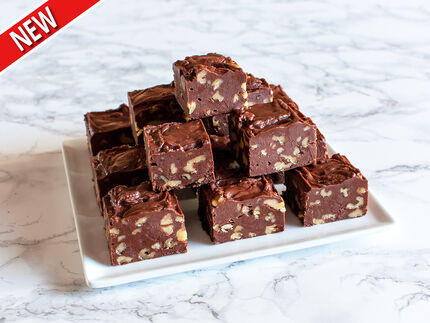
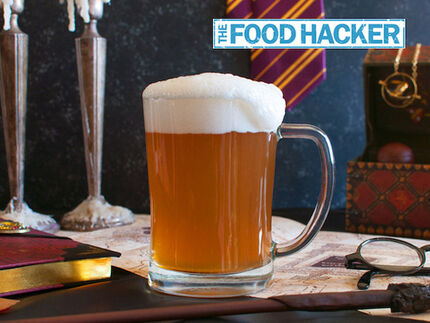
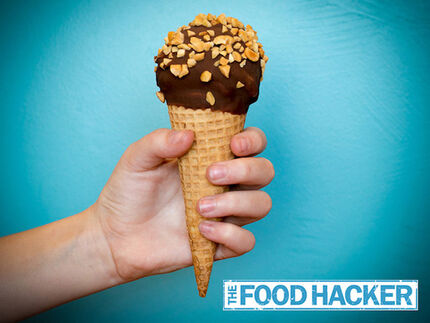

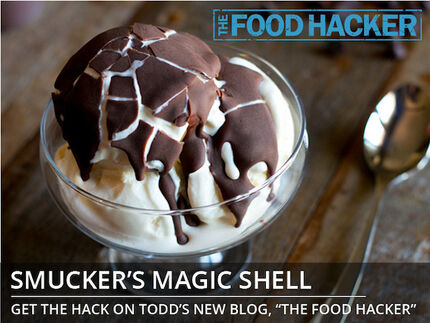
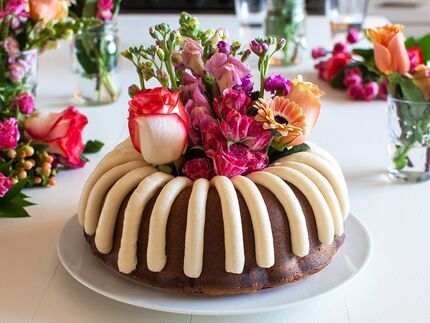
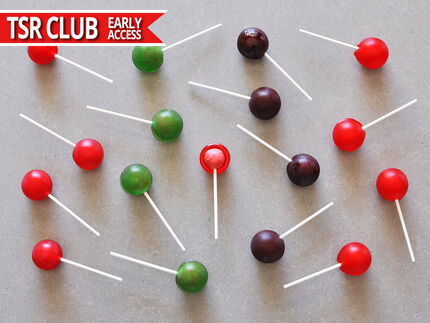
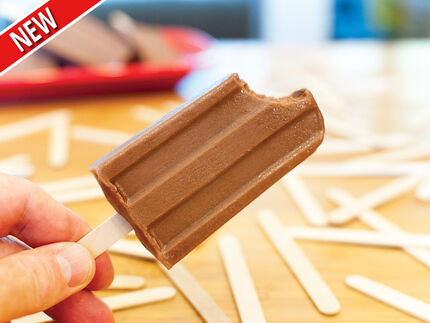

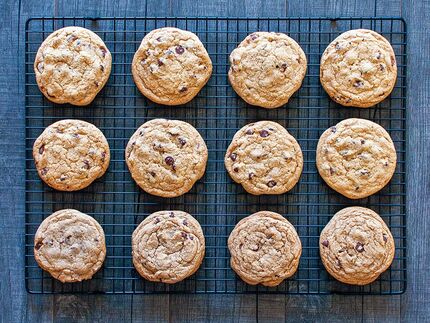
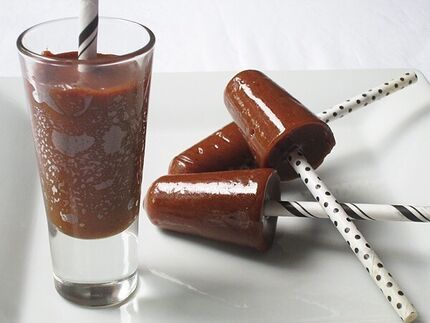
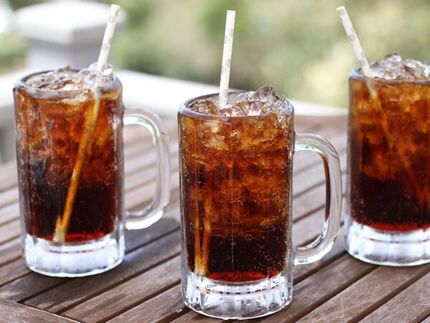


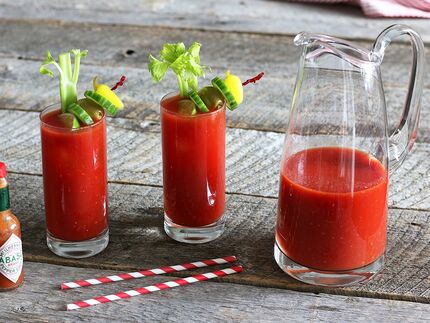
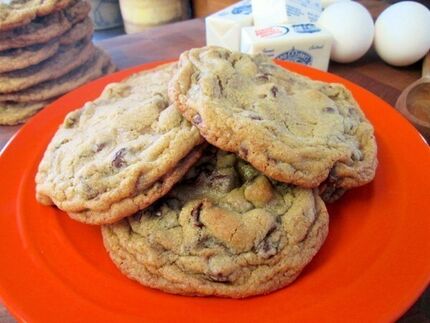
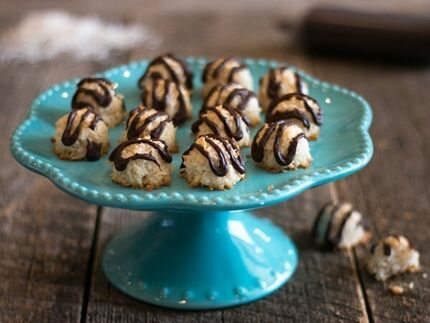
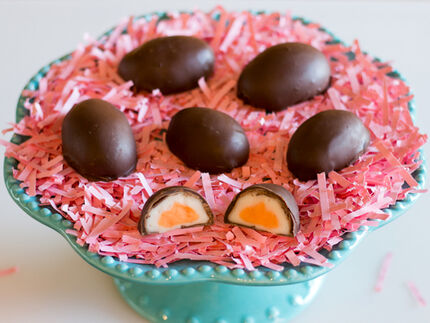
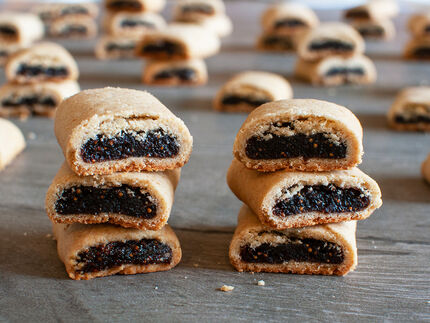


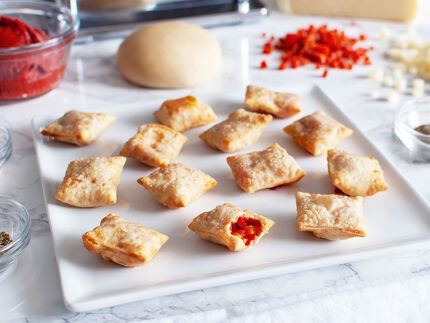

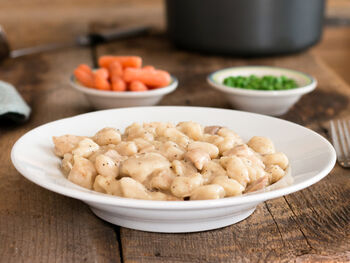
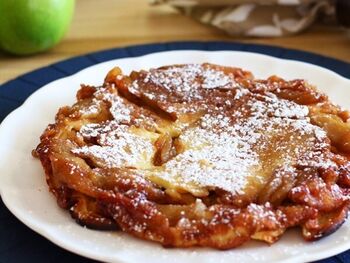
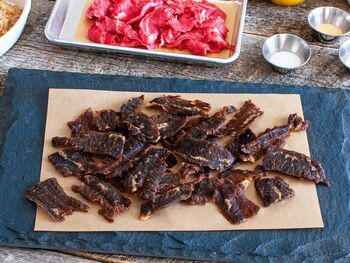
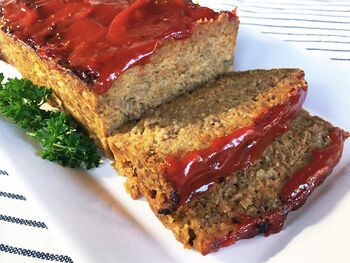
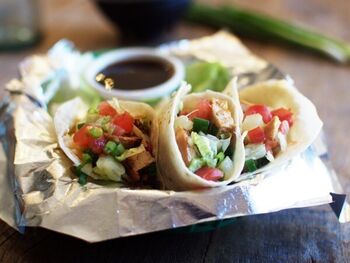
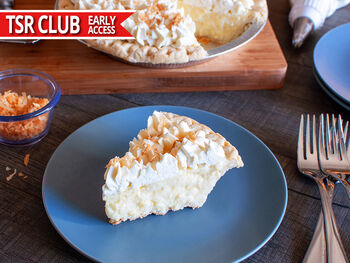

.png)


